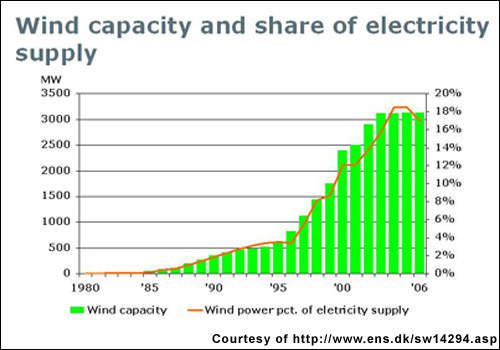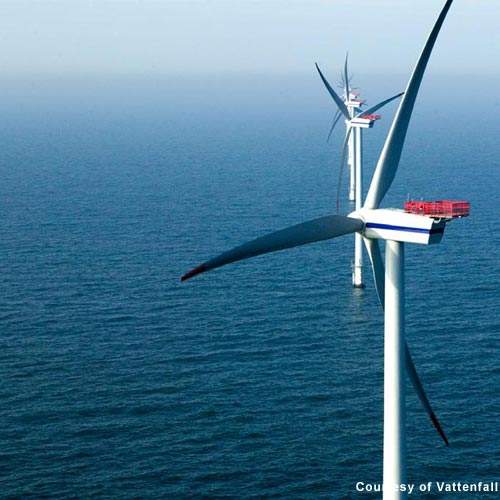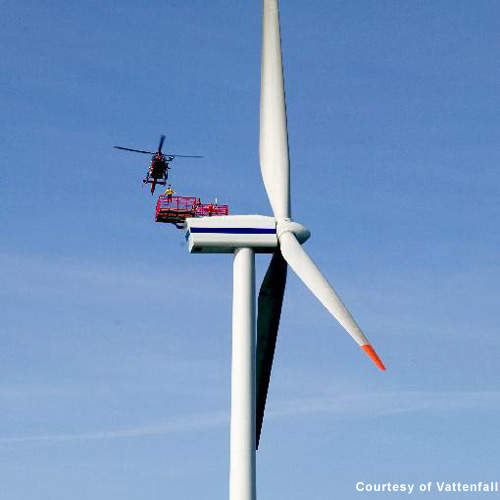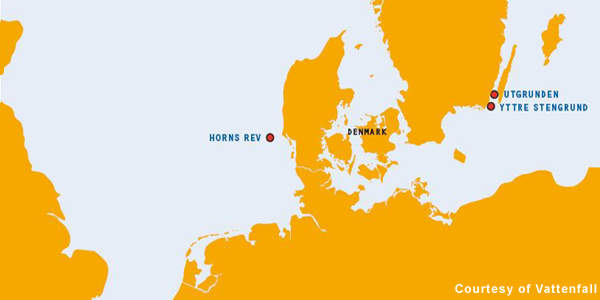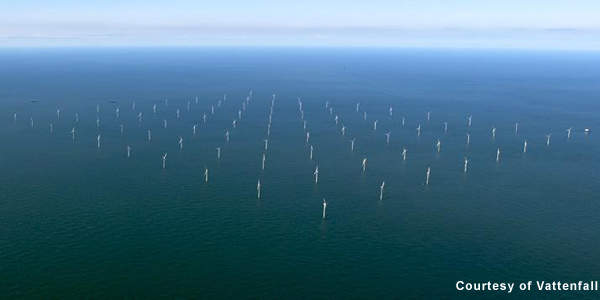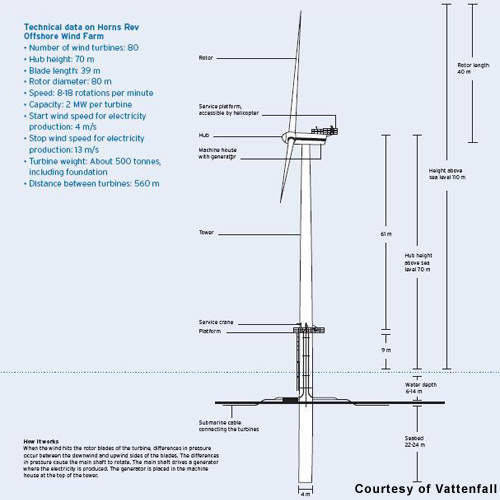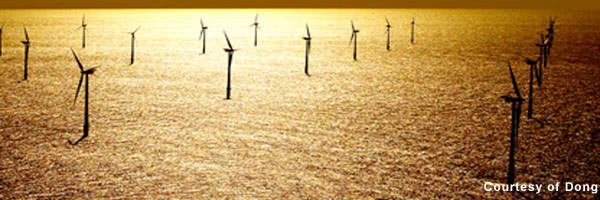The 160MW Horns Rev (Horns Reef) offshore wind farm has 80 turbines off the west coast of Denmark’s Jutland peninsula. Horns Rev was the world’s largest offshore project when Elsam installed it in 2002, close to Blåvands Huk in the North Sea. It is now owned by Vattenfall (60%) and Dong Energy (40%).
Horns Rev uses Vestas V80 2MW turbines, which have an 80m rotor diameter and 70m hub height, and weigh between 439 and 489t each. The wind farm generates enough electricity for 150,000 private homes, or nearly 2% of Denmark’s total electricity consumption. It cost DKK2bn (about €270m).
Expansion
Dong Energy inaugurated a second wind farm, Horns Rev 2, in September 2009. The wind farm is located in the North Sea 300km off the coast of western Jutland. Construction started in May 2008.
The new wind farm has a production capacity of 209MW. The power generated can meet the annual requirements of 200,000 households. It has 91 wind turbines of type SWP2.3-93, with a capacity of 2.3MW each. They were supplied by Siemens. The combined capacity of the two wind farms (Horns Rev and Horns Rev 2) will be about 369MW.
Ambitious wind power plans
Wind power is contributing significantly to Danish efforts to reduce CO2 emissions. Historically, capacity has been developed on land. But it has become increasingly difficult to obtain the required permits for turbine sites, and so alternatives are being considered.
The interest has been particularly directed towards coastal areas with water depths of between 5 and 15m, with the turbines being so far away from the coast that they are invisible from the shore (Horns Rev is sited 14–20km into the North Sea).
Offshore wind turbines also produce 150% more electricity than land-based turbines because of the strength of North Sea winds.
The Horns Rev site stretches over 20km², with 560m between each turbine. The Vestas turbines have a cut-in wind speed of 4m/s, reaching full power at 13m/s and cutting out at 25m/s. Expected annual output is 600,000,000kWh.
Horns Rev represents the first phase of Danish efforts to produce non-polluting electricity from offshore wind turbines. The Danish government has said it would like to see the country’s offshore wind turbines producing about 4,000MW of electricity by 2030. In Sweden, the government similarly hopes to increase wind power capacity significantly over the next ten to 15 years.
Fast development in wind turbines
Wind turbines have developed fast since the beginning of the 1980s and, in particular, in the last ten to 15 years. The Danish Energy Authority (DEA) has created an approval scheme for erecting turbines in Denmark, delegating administration to the Department for Wind Energy and Atmospheric Physics (Afdelingen for Vindenergi og Atmosfærefysik) at Risø National Laboratory.
The DEA, in collaboration with Energinet.dk and network companies, set up a country-wide registry of all onshore and offshore turbines. The registry is updated every month on the DEA internet site, and gives information on wind-turbine production, power, height, positioning and so on.
As of 2007, Denmark had a wind capacity of 3,125MW. Of this, 423MW was offshore. In 2007, wind power production accounted for 19.7% of domestic electricity supply against 16.8% the previous year, because of better wind conditions.
Demonstration wind farms scaled back
In 1998, the Danish Ministry of the Environment and Energy required the Danish electricity suppliers to construct five demonstration wind farms with a combined output of 750MW. In 2002 the newly elected Danish government reduced the plan of action for wind energy to include only two demonstration farms: the 160MW Horns Rev and 158MW Rødsand.
Elsam and Eltra, the independent transmission system operator in Jutland and on Funen, were ordered to build Horns Rev. Elsam was the owner and was responsible for the operation of the wind farm. Eltra was responsible for connecting the wind farm to the national onshore grid.
On 1 July 2006, the Swedish Vattenfall took 60% ownership of Horns Rev, with full responsibility for its operation. As before, operation and maintenance is managed by the Wind Service staff in Esbjerg who were transferred to Vattenfall in connection with the demerger of Elsam. The remaining part of Elsam merged with Dong in the same operation and so 40% of the wind farm is now owned by Dong Energy.

